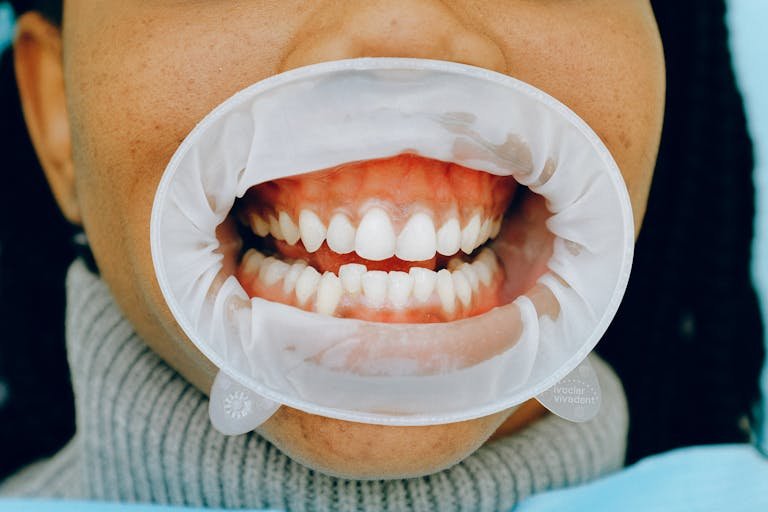LASIK Eye Surgery Risks & Side Effects You Must Know
LASIK’s vision correction surgery allows patients to eliminate their dependence on glasses and contact lenses. The procedure is generally secure but possesses risks that patients need to recognize for their safety. Knowledge about surgery risks and their identified solutions enables patients to choose wisely.
In this blog, I will cover the possible complications of LASIK surgery and how to address them effectively.
Potential LASIK Surgery Risks
1. Visual Aberrations
People who have LASIK surgery might develop visual aberrations which represent vision-impaired distortions. The three main side effects of LASIK surgery include glare, halos, starbursts and inadequate night vision.
Causes:
- Changes in corneal shape
- Large pupil size
- Irregular healing
How to Address It:
- The prescription of eye drops assists patients in obtaining proper corneal healing.
- Consider wavefront-guided LASIK for a more precise correction.
- Wear anti-glare glasses for better night visibility because they become essential during dark driving conditions.

2. Flap Fold or Striae
Flap fold, also known as striae, occurs when the corneal flap created during LASIK does not heal smoothly, leading to wrinkles in the flap.
Causes:
- Poor postoperative care
- Accidental eye rubbing
- Insufficient flap repositioning during surgery
How to Address It:
- A surgeon should perform early detection of this condition followed by gentle massaging techniques.
- Flap lifting techniques along with repositioning operations become necessary for the treatment of severe cases.
Read more: https://eyesonhunt.com/can-myopia-get-better-with-age/
3. Macrostriae
Visibly large folds in the corneal flap called Macrostriae interfere with vision quality to a severe extent.

Causes:
- Improper repositioning of the flap
- Excessive eye movement after surgery
- Trauma to the eye
How to Address It:
- Surgical treatment from a surgeon allows for the proper alignment of the flap.
- The combination of effective post-operative care and avoiding eye accidents helps prevent this problem from occurring.
4. Microstriae
A corneal flap with microstriae exhibits smaller visible wrinkles which show up under microscopic view yet these wrinkles sometimes produce vision effects and sometimes do not affect eyesight.
Causes:
- Minor flap misalignment
- Mild post-operative swelling.
How to Address It:
- Most microstriae resolve on their own.
- The vision issues caused by this situation could lead to a flap repositioning surgery by a surgeon.
5. Flap Dislocation
The corneal flap in flap dislocation moves away from its starting position, which may result in vision problems.
Causes:
- Rubbing the eyes post-surgery
- Trauma or accidental impact
- Poor flap adhesion due to inadequate healing
How to Address It:
- Displaying blurred vision together with discomfort requires you to visit a doctor immediately.
- A surgeon can relocate the flap before securing it with bandage contact lenses for additional stability.
6. Dry Eye
Dry eye stands as the primary LASIK side effect that creates visual disturbances as well as discomfort to the patient.
Causes:
- Temporary disruption of the corneal nerves during surgery
- Reduced tear production
How to Address It:
- Use artificial tears frequently.
- Wearing omega-3 supplements helps enhance tear fluid quality.
- Excessive use of screens or hot/dry climates should be avoided after the procedure.
7. Diffuse Lamellar Keratitis (DLK)
DLK is referred to medically as “Sands of the Sahara” since it represents corneal flap-associated inflammation.
Causes:
- Bacterial contamination during surgery
- Excessive immune response
How to Address It:
- The treatment for light conditions includes using steroid eye drops.
- Fluid irrigation together with flap lifting becomes necessary to remove inflammatory cells from cases with severe symptoms.
8. Pressure-induced Stromal Keratitis (PISK)
After LASIK the condition PISK develops as an extremely uncommon inflammatory state caused by elevated intraocular pressure.
Causes:
- Overuse of steroid eye drops
- Increased eye pressure due to underlying conditions
How to Address It:
- Using medical oversight, patients should either lower their use of drops or discontinue them completely.
- Use pressure-lowering medications if needed.
9. Infectious Keratitis
After LASIK patients may develop serious corneal infections referred to as infectious keratitis which results from bacterial or fungal infections.
Causes:
- Poor hygiene during recovery
- Contaminated surgical instruments
How to Address It:
- Patients should use antibiotics or antifungals administered by prescription as eye drops.
- Do not place your hands on your eyes or make contact with them.
- Seek immediate medical attention for redness, pain, or discharge.
Read More: https://eyesonhunt.com/can-thumbpulling-increase-maxilla-forward-growth/
10. Epithelial Ingrowth
Epithelial ingrowth occurs when surface corneal cells grow under the LASIK flap, potentially causing visual disturbances.
Causes:
- Poor flap adherence
- Previous eye surgeries increase the risk
How to Address It:
- The treatment of these minor cases is generally not essential.
- When severe conditions occur the surgeon requires lifting the flap to manually remove overgrowing cells.
Rare LASIK Surgery Risks
While rare, some LASIK complications can be severe:
- Corneal Ectasia: Corneal Ectasia represents a condition that makes the cornea develop weakness and produce bulges which gradually leads to decreased vision.
- Loss of Best-Corrected Vision: A subset of LASIK patients fail to retain vision quality that exceeds their previous condition with glasses or contact lenses.
- Persistent Pain: Some LASIK patients report persistent eye pain which occurs rarely after their surgery.
How to Minimize Risks
- Choose an experienced LASIK surgeon.
- You must strictly follow all directions regarding your pre-operative and post-operative care.
- You should prevent eye rubbing and take steps to shield your eyes from suffering any harm.
- Report any unusual symptoms to your doctor immediately.
Final Thoughts
Human beings stand to receive major life improvements from LASIK treatment yet they need to grasp its associated dangers. Having knowledge about possible difficulties and appropriate response strategies allows you to prevent issues that can lead to successful LASIK results. Talk to an ophthalmologist who meets the requirements to receive an evaluation of your options before LASIK surgery.







